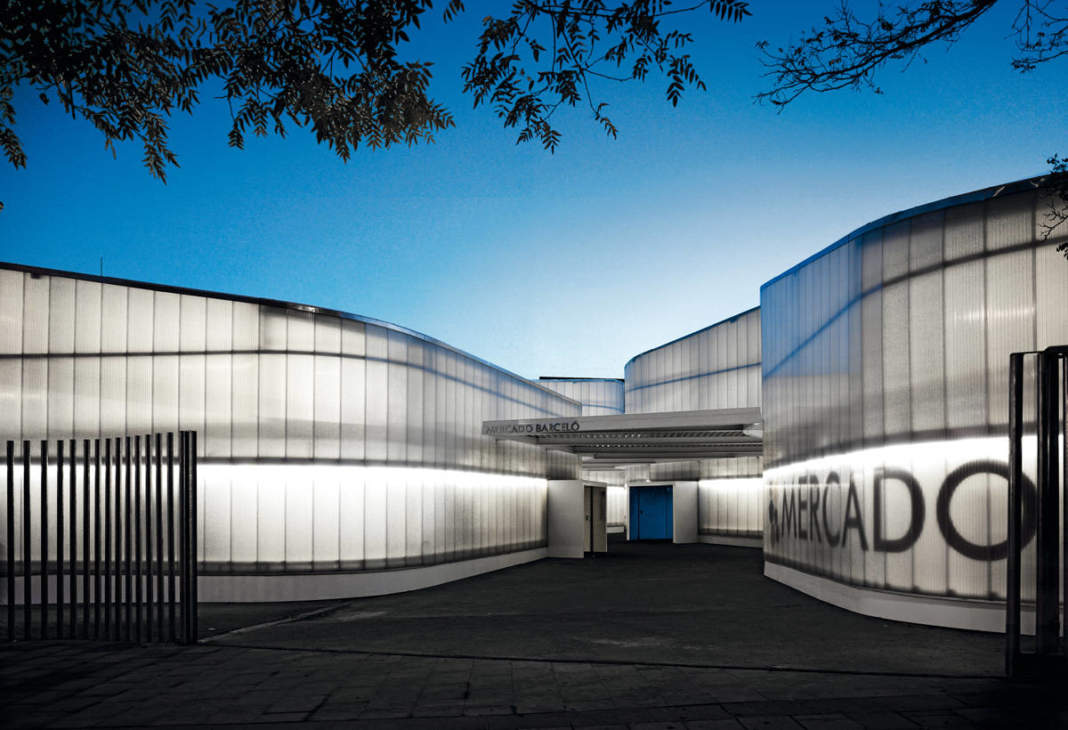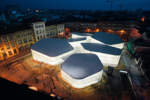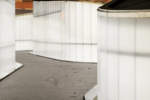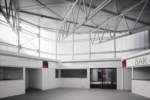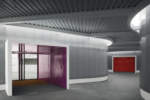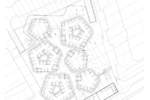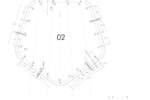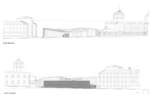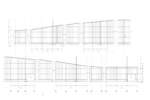architect: Nieto Sobejano Arquitectos
location: Madrid, Spain
year: 2009
The project for the new Barceló Market and its surroundings is actually the sum of various different interventions: an urban complex featuring elements of differing scale and purpose which are destined to transform quite remarkably a densely inhabited and central district of Madrid. The winning proposal of the competiton stems from the idea of defining new unoccupied urban spaces which connect and interrelate the different volumes and uses that will have to coexist: market, shopping centre, sports facility, public library, parking and outdoor zones. During the work in progress on the final building, a temporary structure had to be built which will run until the new facilities are opened. Therefore, the Temporary Market has been conceived as a recyclable complex which, despite its provisional nature, is able to prompt a new perception of its urban surroundings. Situated in Plaza del Arquitecto Ribera, on top of an underground car park, the idea of the project evokes traditional markets in public squares consisting in self-contained structures on a single level which can be used in a variety of different ways. Given the need of hosting the many stalls of the former market, the complex is made up by six pentagonal constructions, of different heights and sizes, thus avoiding excessive volume with respect to the surrounding buildings.
A linear, two-storey construction running along Calle Beneficencia will host the loading and unloading bays, warehouses, cold store and utilities. The design of the pavillions is conceived as a combinatorial exercise: a common pentagonal plan, with two different scales, each repeated three times, rotated at different angles, creating an apparently random complex, but which in fact is simply variations and combinations on a single original feature. In this way, the monotony of a basically repetitive design is avoided, while simultaneously varying the scale of the construction with respect to the surrounding buildings. The absence of sharp edges in the volumes, and their light and translucent cladding enhance the light and temporary perception of the intervention in the city. An essential factor of the project is the opalescent white polycarbonate exterior screens of the polygonal cylinders which allow natural light to pass during the daytime and which convert the stalls in large lanterns illuminating the square at night. When building works on the permanent market come to an end, the pentagonal cylinders of the Temporary Market can be disassembled and transferred elsewhere in the city, thus the square where they are hosted now will return to its former use; namely, that of a public space which will complete the transformation of this historical area of Madrid.
Fuensanta Nieto and Enrique Sobejano are graduated Architects of the Escuela Técnica Superior de Arquitectura Madrid and the GSAP Columbia University, New York. USA. They teach currently at the Universidad Europea de Madrid (UEM) and at the Universität der Künste of Berlin (UdK), and are partners of the office Nieto Sobejano Arquitectos S.L. Both have been visiting critics and/or referents at various Spanish and international universities and institutions. From 1986 to 1991 they were editors of the architectural journal ARQUITECTURA edited by the Architectural Association of Madrid (Colegio Oficial de Arquitectos de Madrid). Their work has been published in various Spanish and international magazines and books and has been exhibited all around the world.


